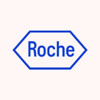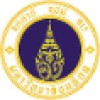
Achilles Tendon for the Treatment of Gluteus Medius Insufficiency
Arthroplasty ComplicationsMuscle Weakness2 moreResidual limping after total hip arthroplasty is a serious complication that lacks effective treatment. The purpose of this study is to evaluate a surgical treatment for residual limping and compare its results with non-surgical treatment. Our hypothesis is that surgical treatment followed by physiotherapy increases hip function and reduces limping compared with non-surgical treatment with physiotherapy alone.

Autologous Stem Cell Transplant for Neurologic Autoimmune Diseases
Autoimmune DiseaseNeurologic Autoimmune Disease17 moreThis phase II trial studies the side effects and how well carmustine, etoposide, cytarabine and melphalan together with antithymocyte globulin before a stem cell transplant works in treating patients with autoimmune neurologic disease that did not respond to previous therapy. In autoimmune neurological diseases, the patient's own immune system 'attacks' the nervous system which might include the brain/spinal cord and/or the peripheral nerves. Giving high-dose chemotherapy, including carmustine, etoposide, cytarabine, melphalan, and antithymocyte globulin, before a stem cell transplant weakens the immune system and may help stop the immune system from 'attacking' a patient's nervous system. When the patient's own (autologous) stem cells are infused into the patient they help the bone marrow make red blood cells, white blood cells, and platelets so the blood counts can improve.

Myasthenia Gravis Inebilizumab Trial
Myasthenia GravisRandomized, double-blind, placebo-controlled, Phase 3, parallel-group study with optional open-label extension.

A Study To Evaluate Efficacy, Safety, Pharmacokinetics, And Pharmacodynamics Of Satralizumab In...
Generalized Myasthenia GravisThis study will evaluate the efficacy, safety, pharmacokinetics, and pharmacodynamics of satralizumab compared with placebo in participants with generalized myasthenia gravis (gMG).

Comparison of Methods in Post Operative Knee Arthroscopy Rehabilitation
Muscle WeaknessMuscle AtrophyThe aim of this study is to investigate the efficacy of blood flow restriction (BFR) therapy in post operative rehabilitation following knee arthroscopy.

Pilot Study on Device-assisted Mobilisation of Critically Ill Patients
Muscle WeaknessCritical IllnessThis Pilot study will hypothesize that patients with organ insufficiency and breathing assistance in our post-anaesthesia care unit (PACU) and ICU will be mobilized more often to an ICU mobility scale (IMS) ≥ 4 (i.e. standing) using the Liana® mobilizer. Therefore a randomized controlled pilot study will be conducted. The aim is to achieve an important physical function mile stone more often using this device. Secondary hypotheses are: The intervention will relieve the burden of the health care staff in the unit The intervention will positively influence the functional outcome of critically ill patients The intervention is perceived as positive by the patients

Early Versus Conventional Cessation of Hydrocortisone in Septic Shock
Septic ShockAdverse Event5 moreSeptic shock is one of the causes of death in ICU and hospital. Refractory shock is the problem which healthcare providers should recognize though it is difficult to handle with. The corticosteroid called hydrocortisone is one of the treatment in refractory septic shock which requires vasopressor to maintain blood pressure. In recovery phase of septic shock and weaning off vasopressor, there is no definite way to taper off hydrocortisone.

Efficacy of Triburter on Respiratory Muscle Function in Patients After CABG in Cardiac Rehabilitation...
Thoracic SurgeryPostoperative Period2 morePost-surgery patients have muscle impairments, especially in the respiratory muscles, because the anesthesia, surgical incision, mechanical ventilation, pain, and prolonged postures, affect the mechanical condition of respiratory muscles. Those consequences produce a low exercise tolerance and low quality of life. These patients must go to cardiac rehabilitation to improve heart functions; however, these patients have a weakness in their respiratory muscles. Currently, there are many devices for respiratory muscle strength, although these devices are expensive, and they only have one circuit for training (inspiratory or expiratory). Triburter is a new device with two valves and positive pressure generation, this is a promising alternative because Triburter improves the mechanics of ventilation, increasing their functionality and quality of life. For this reason, the main hypothesis is that respiratory muscle training with Triburter improves the strength of inspiratory and expiratory muscles.

Efficacy of Early Inspiratory Muscle Training in Lung Transplanted Patients
Lung Transplant RecipientsMuscle Weakness3 moreLung transplantation is an effective therapeutic option in the end-stage of chronic respiratory diseases. Lung transplantation improves lung function in terms of capacity and volume. However, the transplanted patient still suffers from muscle weakness and exercise intolerance. In recent years, respiratory physiotherapy work has intensified in critically ill patients with respiratory muscle weakness and the application of inspiratory muscle training (IMT), which has been shown in several studies to increase inspiratory muscle strength (IMT), improve ventilation and reduce the sensation of shortness of breath. Despite this emerging evidence, inspiratory muscle training (IMT) is not standard practice in most ICUs around the world, nor is it included in a protocolised manner among the components of a pulmonary rehabilitation programme. Given the limited evidence, the investigators propose to conduct this randomised controlled clinical trial in lung transplant recipients. The study will compare two groups of transplanted patients, a control group that will follow the rehabilitation programme and standard medical care and another experimental group that will also perform inspiratory muscle training. This study aims to analyse the effect of IMT on inspiratory muscle strength, exercise capacity and quality of life in lung transplant patients.

Contract-Relax (CR) Technique in the Management of Diaphragmatic Paresis After Cardiac Surgery
SurgeryCardiacPostoperative respiratory complications are common complications of patients after cardiac surgery and increase morbidity and mortality and hospital length of stay. Diaphragmatic dysfunction accounts for between 2 and 15% of these complications. Diaphragmatic paresis is one of these dysfunctions and could be due to an intra-operative phrenic nerve injury or harvesting of a mammary artery responsible for diaphragmatic devascularization. It alters the ventilatory mechanics and causes acute respiratory distress often requiring the use of mechanical ventilation. The diagnosis of this dysfunction can be made by thoracic ultrasound with assessment of diaphragmatic excursion. For patient with paresis, ultrasound criteria is an excursion < 25 mm after deep inspiration for at least one of the two hemidiaphragms. This dysfunction is most often transient in the postoperative period, but it can also become persistent. Contract-Relax (CR) physical therapy technique can be applied to any muscle, providing muscle strengthening, neuromotor stimulation, and a gain in joint amplitude. Currently, post-cardiac surgery management of respiratory physiotherapy is the same for a patient with or without paresis. Moreover, the CR technique of the diaphragm is not part of this "standard" rehabilitation. The objective of this study is to determine if the CR technique associated with the current respiratory management allows an early rehabilitation of patients with diaphragmatic paresis after cardiac surgery.
